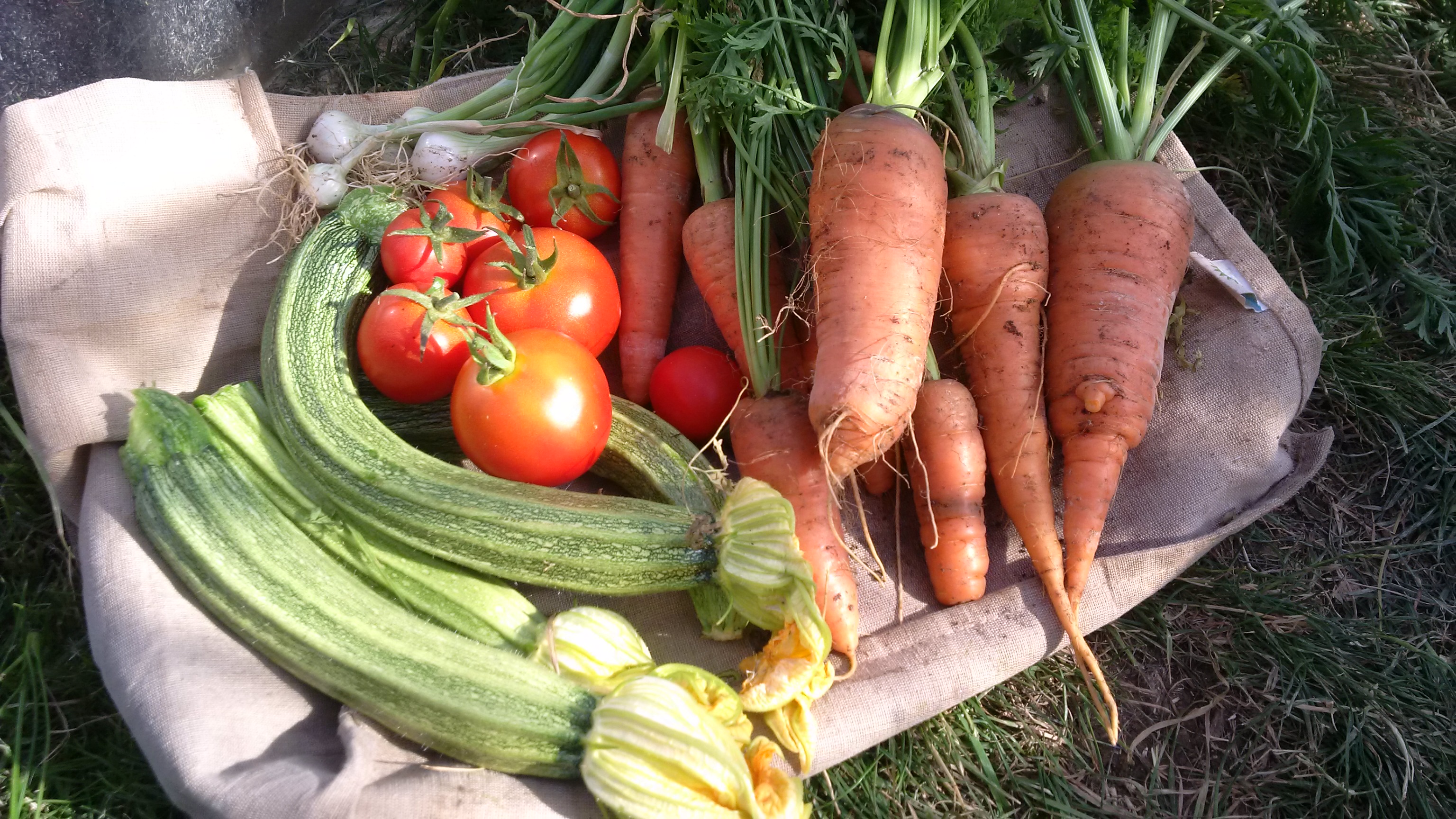
Under the entry for August in my book ‘Vegetable Growers Calendar’ is this rather sanctimonious and self-satisfied quotation from ‘Five Hundred Pointes of Good Husbandrie’ written by Thomas Tusser in 1583:
’Tis good to be knowne,
to have all of thine owne.
Notwithstanding this smug-sounding couplet, August really is predominantly a time for the harvest and to be thankful for the bounty of the land. There is an abundance of crops; tomatoes and cucumbers in the glasshouse; french beans, runner beans, cabbages, carrots broccoli, beetroot all in good supply and now is the time for preserving and storing in preparation for the leaner days of winter ahead. With two adjacent allotments and no longer any hungry boys to feed at home there is no way we can possibly consume all we produce during the summer. A joke recently posted on Facebook went something like this: “WARNING: It’s the time of year when allotment holders will be trying to give away their courgettes again!”. But as well as the real delight in giving away fresh fruit and vegetables to friends and family, we will be busy bottling and freezing what we can. A glut of tomatoes will be put through the passata machine; early windfall apples will not be wasted but cooked up and frozen; beetroot can be bottled; cucumbers pickled. Some crops escape this treatment – fresh cabbage for example is generally available most months of the year – so no sauerkraut for us! and some crops simply don’t lend themselves to long-term preservation.
Allotment holders are usually enthusiastic cooks as well as gardeners and each interest ‘feeds’ the other. We want to cook what we grow and grow what we like to cook and eat. So we step back from the allotment this week and into the kitchen for a few ideas of how to use some of the surplus!
Cucumber seems very much a love or hate thing – and some people do find it difficult to digest – but when we have more than we can use (and just two greenhouse plants can easily give rise to such a situation) we make a Cucumber Spritzer – very refreshing on a hot day.
Cucumber Spritzer
Take half a large cucumber, peel most of it – just leave a few small dark green strips for colour. Pop it in the blender along with half a bottle of white wine and some elderflower cordial. Blend until smooth then pass the whole lot through a fine sieve. Return the pulp from the sieve to the bender and whizz it again. Pass it through the sieve once more, then serve on ice in a highball glass. Liven it up with soda water or lemonade if you want more ‘fizz’!
You may remember me mentioning the basil variety ‘Gigante’ with huge leaves grown from seed bought in Italy. We have plenty for making fresh pesto which is so much more flavoursome and natural than any bottled version.
Real pesto (this is from Ursula Ferrigno’s book ‘Truly Italian’)
Grind together about 100g fresh basil leaves (that’s a lot!) with about 4 tbs good olive oil and three garlic cloves. Add 3 tbs parmesan and 2 tbs pine nut kernels and grind until the texture is how you like it.
It is said that the best pesto is made by grinding all the ingredients by hand in a pestle and mortar. I’m sure that’s true but the blender works just fine for me! Fresh pesto is absolutely fantastic!
Generally, harvesting rhubarb should stop by the end of June to give the plant time to build up it’s reserves and also because the stems become tough and woody by then. However there is often some tidying up to do because as the plants are so vigorous, the leaves grow out over other crops. Combined with the windfall apples and newly ripening cayenne peppers from the greenhouse I made this spicy chutney earlier this week.
Spicy Chutney
Simmer ¾ pint of cider vinegar with 2 lbs apples and whatever rhubarb you have – about 12 oz is ideal. Add 10 oz chopped onions, 4 oz sultanas, 10 oz soft brown sugar, 1½ oz grated root ginger, 2 crushed cloves garlic, 1 small, finely chopped cayenne pepper and a teaspoon of salt and simmer for about 40 minutes until reduced and setting. Bottle and leave for at least a month in a cool, dark place.
There’s a saying in the permaculture world – first come the pests then the predators. The point is that predators only arrive once there is something to eat! So you have to endure a short period of infestation in order to attract the natural enemies of the blackfly, aphids, slugs and other undesirables! The frogs which came from the spawn in our allotment ‘pond’ (actually an old ‘Avocado’ coloured bath) this spring are now mature enough to venture forth from the safety of the bath/pond and take up daytime residence in various locations around the allotment. Despite the heat, we now have regular amphibious occupants of the greenhouses which are no doubt helping to keep the slug population in check. Perhaps surprisingly, they always leap clear of the spray from the watering can but seem determined to stay put. We never ‘seeded’ our pond with frogspawn so a pair of frogs must have found a new home there some years ago – and very welcome they are too!